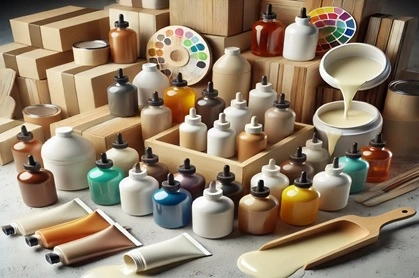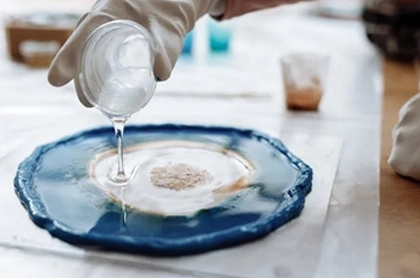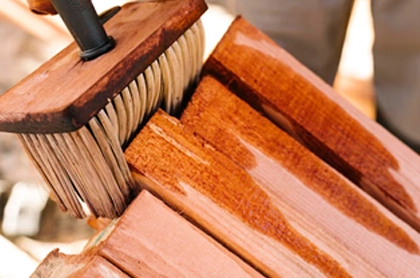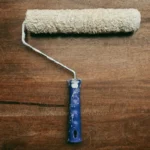When it comes to enhancing the beauty and durability of wood, wood polish and epoxy resin are two essential tools that have stood the test of time. Whether you are a DIY enthusiast, a professional wood worker or simply someone who loves the elegance of finely crafted wood, understanding these materials can unlock a world of possibilities.
In this guide we will explore everything you’ll need to know about wood polish and epoxy resin-from their unique properties and applications to expert tips on achieving flawless finishes. Whether you’re refining furniture, crafting custom countertops, or protecting wooden surfaces from wear and tear, this resource has you covered.
So, whether you’re new to woodworking or looking to refine your skills, dive in to discover the secrets to achieving durable, glossy, and professional-looking results every time.
Why Wood Polish and Epoxy Resin are Game-Changers for Wood Working
Wood Polish and Epoxy Resin have revolutionized the way we treat and protect wood surfaces. Wood Polish enhances the natural beauty of wood, bringing out its grain, texture, and colour while providing a layer of protection against moisture, stains, and everyday wear and tear. From matte finishes that lend a subtle elegance to glossy polishes that add a high-end sheen, these products are essential for maintaining and beautifying wooden furniture, flooring and decor.
Epoxy Resin, on the other hand, offers unmatched versatility and durability. Its ability to bond securely to wood while creating a glass-like finish makes it a favourite among woodworkers and artisans alike. Whether you’re creating a striking river table, sealing a countertop for heavy duty use, or embedding decorative items into a wooden surface, epoxy resin delivers both aesthetic appeal and functional strength.
The combination of wood polish and epoxy resin allows you to elevate your woodworking projects to the next level. Together, they can restore life to old furniture, protect new creations from damage, and open up endless creative possibilities for unique designs. These materials aren’t just about protection- they’re about unlocking the full potential of wood, ensuring it remains a timeless and cherished material in your home or workspace. (https://www.amazon.in/)
Types of Wood Polish and Epoxy Resin: Choosing the Right Product for Your Project
When it comes to wood polish, the market offers a range of options tailored to different finishes and purposes. Wax polishes are ideal for a soft, natural glow and are commonly used on antique furniture. Oil-based polishes penetrate deep the wood, enhancing its natural grain and offering long-lasting protection. Lacquer polishes, on the other hand, create a glossy, high-shine finish that’s perfect for modern aesthetics.
Epoxy resin also comes in various formulations to suit diverse applications. Clear epoxy resin is a go-to choice for creating transparent, glass-like finishes and tables and countertops. For those interested in creative projects, pigmented epoxy resins or metallic finishes allow for striking, artistic effects. Additionally, UV- resistant epoxy resins are designed for outdoor applications, preventing discoloration and ensuring durability under sunlight.
Understanding these types and their uses can help you select the right materials for your project, whether you’re aiming to restore a family heirloom, craft a custom piece, or add a protective layer to heavily used wooden surfaces. (https://www.asianpaints.com/guides/wood-finish-guide.html)
The Benefits of Wood Polish and Epoxy Resin: More than Just Protection
Wood Polish and Epoxy Resin do much more than enhance the appearance of wood- they add value, functionality and longevity to your projects.
Wood Polish Benefits- By sealing the wood’s surface, polish prevents moisture, dust, and stains from penetrating the material, keeping it in pristine condition. It also revitalizes older wood, restoring its natural beauty and extending its lifespan. Regular polishing can reduce the need for costly repairs and refinishing, making it a simple yet effective way to maintain your wooden furniture and decor.
Epoxy Resin Benefits- Known for its durability and strength, epoxy resin creates a protective barrier that can withstand heavy use, making it ideal for countertops, flooring and high-traffic areas. Its versatility allows for creative applications such as embedding objects, adding pigments, or creating artistic effects that transform wood into a statement piece. Epoxy also fills cracks and imperfections in wood, reinforcing its structure and ensuring a smooth, polished finish.
By using these materials together, you can achieve a perfect balance of beauty, protection, and functionality in every project, whether it’s a simple DIY upgrade or a professional woodworking masterpiece
How to Use Wood Polish and Epoxy Resin: A Step-by-Step Guide
For readers looking to achieve professional-quality results, understanding the correct application process is crucial. Here’s a simplified step-by-step guide for each material:
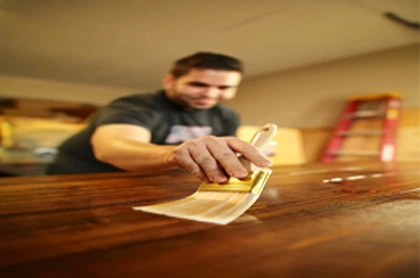
Steps to Apply Wood Polish
- Prepare the Surface: Sand the wood surface to remove any old finish, dirt or imperfections. Wipe it clean with a damp cloth.
- Choose the Right Polish: Select a polish that suits your wood type and desired finish (e.g. wax, oil, or lacquer)
- Apply the polish: Use a soft cloth or applicator to apply the polish evenly across the surface. Follow the grain of wood for the best results.
- Let it Dry: Allow the polish to dry as per the manufacturer’s instructions. Some polishes may require buffing for a glossy finish.
- Buff and Finish: If necessary, use a clean cloth or buffer to enhance the shine and smoothness.
Steps to Apply Epoxy Resin
- Prepare the Wood: Sand the surface thoroughly and ensure it’s clean and dry. Use masking tape to protect areas where resin isn’t required.
- Mix the Resin: Combine the resin and hardener in the recommended ratio, stirring slowly to avoid air bubbles.
- Pour the Resin: Gradually pour the resin onto the wood surface, spreading it evenly using a spatula or brush.
- Remove Air Bubbles: Use a heat gun or torch to eliminate any bubbles that form on the surface.
- Let it Cure: Allow the resin to cure in a dust-free environment for the time specified by the manufacturer. Avoid touching it during this period.
- Sand and Polish (Optional): For a high-gloss finish, sand the cured resin lightly and apply a polish or additional resin coat.
Mastering these steps will ensure your projects are not only visually stunning but also long-lasting. Whether you’re working on furniture, art pieces or structural design, these techniques will help you achieve professional touch.
Common Challenges and Solutions: Troubleshooting Wood Polish and Epoxy Resin Issues
While wood polish and epoxy resin are versatile materials, they can present some common challenges. Understanding how to overcome these can ensure smooth and successful project outcomes.
Challenges with Wood Polish
- Drying Time Issues: One of the most common problems with wood polish is uneven drying or extended drying times, leading to a sticky or uneven finish.
- Solution: Ensure the wood surface is free from dust, oils, and moisture before applying polish. Proper surface preparation is key. Additionally, applying thin, even layers can prevent sticky spots. Allow the polish to dry in a well-ventilated area. If the surface remains tacky, gently buff the area with a soft cloth or fine-grade sandpaper to smooth it out once dry.
- Fading or Yellowing: Wood polish can sometimes fade or develop a yellowish hue over time, especially in areas exposed to sunlight or frequent wear.
- Solution: Opt for polishes with UV protection or additives that prevent discoloration. Periodic reapplication will help maintain the polish’s luster and protect against fading. Regular maintenance ensures that the natural beauty of the wood is preserved over the years. (Can check https://www.reddit.com/ for more information)
Challenges with Epoxy Resin
- Bubbles and Air Pockets: Bubbles can form during the mixing process or as the epoxy is poured onto the wood surface, leading to imperfections in the final result
- Solutions: To minimize bubbles, mix the resin slowly and thoroughly to ensure an even blend. After pouring, use a heat gun, torch, or even a toothpick to carefully pop any bubbles that rise to the surface. Avoid overworking the resin, as excessive mixing can introduce more air.
- Curing Issues: Sometimes, epoxy resin doesn’t cure properly, resulting in a tacky or soft surface that doesn’t harden fully.
- Solution: Ensure you follow the manufacturer’s recommended curing time and environmental conditions (temperature, humidity, dust-free environment). If curing fails, lightly sand the surface and apply a second layer once the first has fully cured. Always ensure that epoxy is poured in thin, even layers, and avoid excessive heat or exposure to contaminants during curing
By understanding and addressing these challenges, you’ll be able to refine your techniques and achieve smooth, professional finishes with wood polish and epoxy resin. Proper preparation, careful application, and consistent maintenance are the keys to overcoming these common hurdles and achieving outstanding results.
Maintenance Tips for Long-Lasting Results
Creating a stunning wood finish with polish and epoxy resin is only part of the journey-maintaining it ensures your work remains beautiful and durable for years to come. Here are some practical tips to preserve and protect your creations:
For Wood Polish
- Clean Gently: Use a soft, dry cloth to dust regularly and avoid abrasive cleaning tools that can damage the polish. For deeper cleaning, use a mild, wood-safe cleaner diluted with water.
- Avoid Direct Sunlight: Prolonged exposure to sunlight can cause wood finishes to fade or discolour over time. Place furniture away from direct sunlight or use UV blocking curtains to minimise exposure.
- Reapply polish periodically: Over time, the protective layer provided by polish can wear down. Reapplying a thin coat every 6-12 months (depending on use) will help maintain the finish and protect the wood.
- Protect Against Moisture: Use coasters, placemats, or protective pads to prevent water rings, stains, or heat damage on polished surfaces.
For Epoxy Resin
- Clean With Care: Wipe resin surfaces with a soft, damp cloth and mild soap. Avoid using harsh chemicals or abrasive materials that can scratch the surface.
- Buff For Shine: If the resin loses its glossy finish over time, lightly buff it with a polishing compound or a soft cloth to restore its shine.
- Prevent Scratches: Although epoxy is durable, sharp or heavy objects can leave scratches. Use protective pads under heavy items and avoid dragging objects across the surface.
- Address Surface Imperfections: If small scratches of scuffs appear, sand the affected area lightly with fine-grit sandpaper and apply a fresh layer of epoxy or polish to restore the surface.
With these maintenance practices, your wood polish and epoxy resin finishes will continue to look as good as new, even with regular use. A little extra care goes a long way in preserving the beauty and functionality of your creations.
Conclusion: Bring Your Vision to Life with Wood Polish and Epoxy Resin
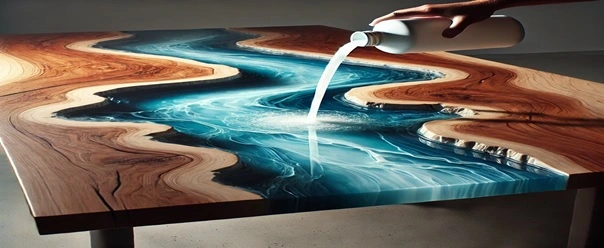
Wood polish and epoxy resin are more than just materials—they’re tools of transformation, helping you turn ordinary wood into extraordinary creations. From enhancing natural beauty to ensuring durability, these versatile products open the door to endless possibilities for both beginners and seasoned woodworkers.
Whether you’re restoring a cherished family heirloom, crafting a one-of-a-kind masterpiece, or simply protecting your wooden surfaces, the right combination of polish and resin can make all the difference. With the tips, techniques, and insights shared in this guide, you’re now equipped to embark on your next project with confidence and creativity.
So, what are you waiting for? Dive into the world of wood polish and epoxy resin, and let your imagination shape timeless, stunning works of art. After all, every piece of wood has a story—it’s up to you to bring it to life.










